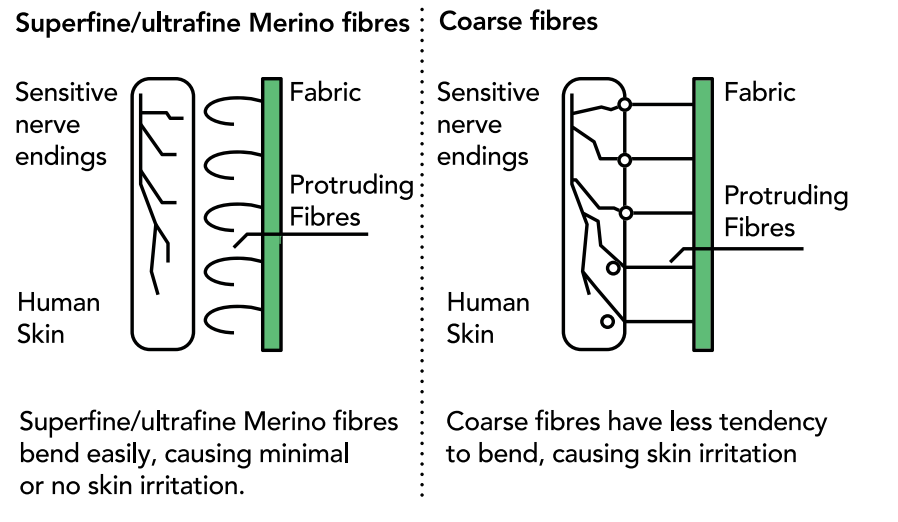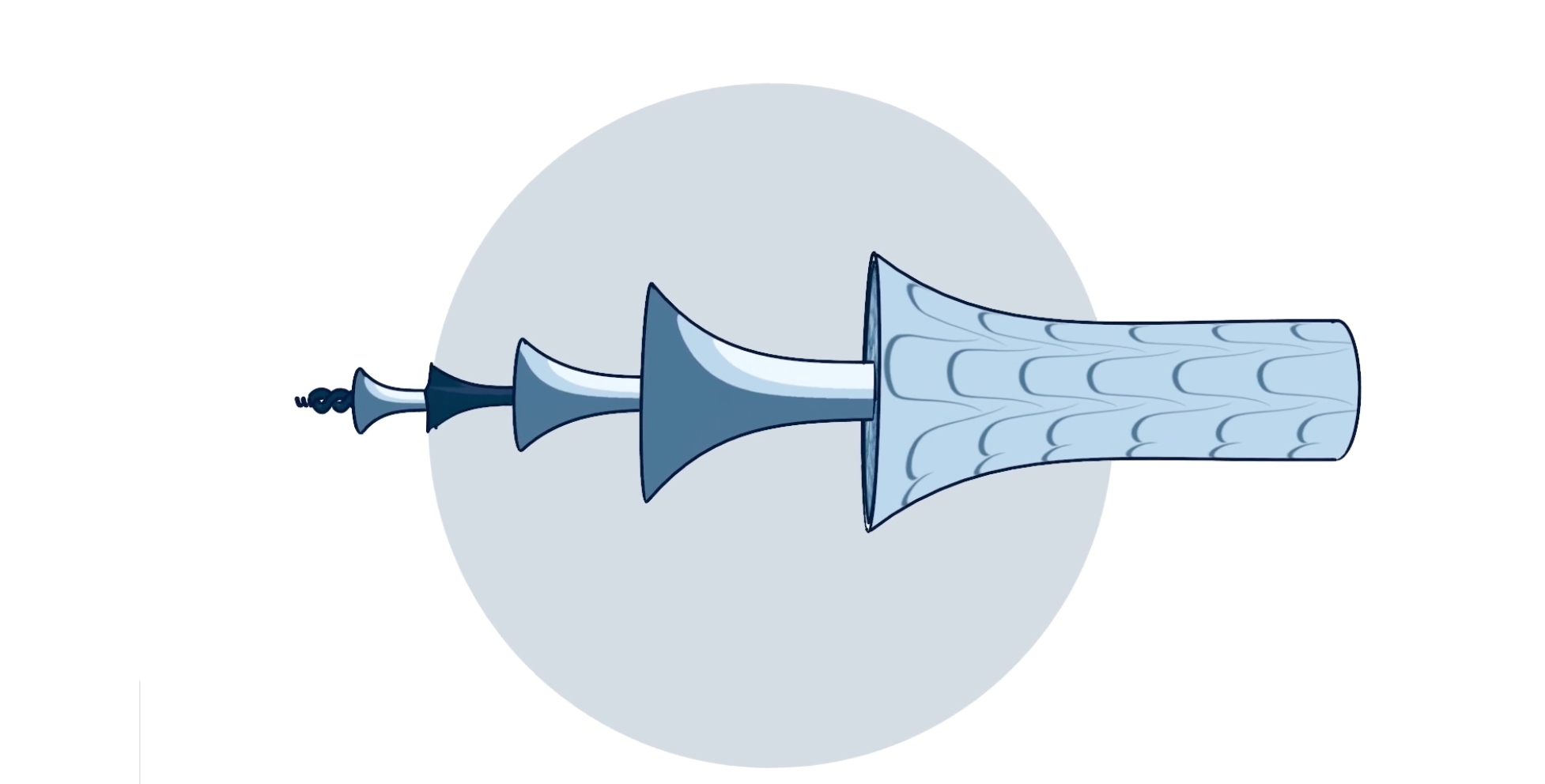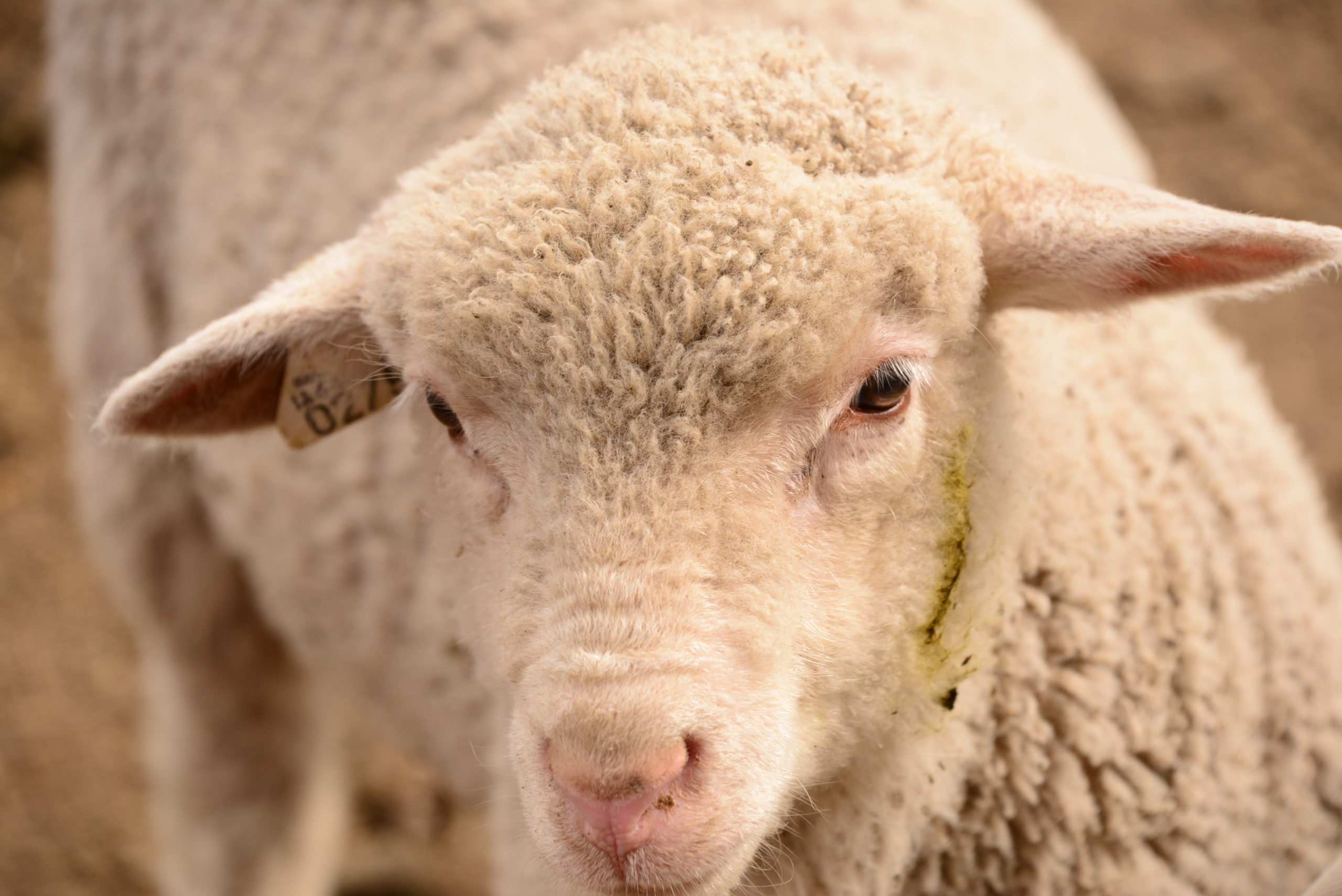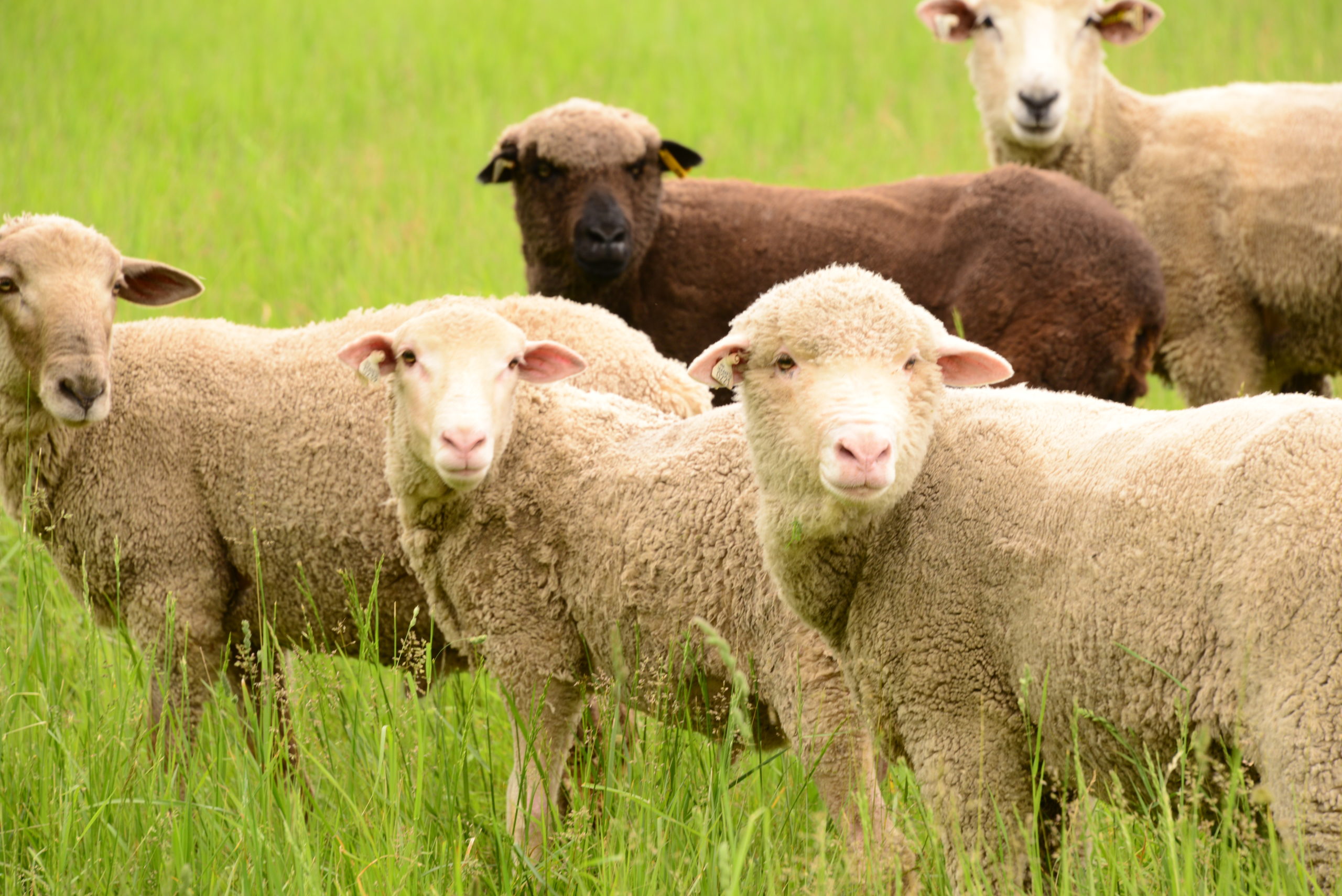Wool, Proudly Next-to-Skin.
A growing body of research is highlighting the link between wool and wellbeing— giving the fiber once labeled as a skin irritant a chance to repair its reputation.
The Sheep Have Good News
Do you remember that thick, scratchy wool sweater you used to hate? I bet you just impulsively scratched your neck at the thought of it. Most of us have a very visceral memory of prickly wool against our skin. Perhaps you still refuse to wear wool because of that loathsome old sweater.
Well, my friend, the sheep have good news: technology innovations have smoothed away all your prickly sweater woes. Gone are the days of itchy wool up against your smooth skin. Today, ultrafine wool is one of the healthiest, most sustainable, most comfortable fibers you can wear. All thanks to five decades of research and innovation by textile scientists and chemists like Dr. Roy Kettlewell.
Dr. Kettlewell first started working with wool in 1973 for the International Wool Secretariat, The Woolmark Company, Australian Wool Innovation, and latterly the American Wool Council. He specializes in chemical finishing and has worked with the entire wool processing pipeline from raw fiber to garment making. Over the course of this career, Dr. Kettlewell and his many colleagues have officially debunked the allergy myth and taken the itch out of wool.
The Allergy Myth
Many people who remember that itchy wool sweater thought the itch was an allergic reaction to wool. Many doctors at the time reinforced that myth. Since then, we have a few decades of research that proves that it’s extremely rare for humans to be allergic to wool, because, like the hairs on your own head, wool is made of keratin. Keratin is an essential protein in the structural makeup of our skin and hair, as well as the hooves, horns, and feathers in animals.


After a study funded by Australian Wool Innovation (AWI) and conducted by a group of allergists, immunologists, and dermatologists from around the world, analyzed 100 years of research to assess claims that wool causes allergy. We now know that the prickle from your wool garment is caused by thick, coarser fibers poking against your skin signaling touch receptors on your skin, rather than finer fibers that bend against the skin thick fibers from any material can trigger the nerve endings in our skin and create a pricking sensation.
For next-to-skin garments, the mean fiber diameter should be less than 19 microns or for socks around 22 microns or less (for context, the human hair is 45 to 60 microns.) The finer wool fibers from breeds like Merino or Rambouillet, do not chafe, itch, or irritate the skin like other coarse fibers, including even acrylic and polyester.
Getting the Itch Out:
Innovations in processing make wool softer and more versatile

Wool’s perceived ‘itch’ was an important impetus for much of the performance research conducted by Dr. Kettlewell and his colleagues. While certain breeds grow naturally fine wool that needs no extra treatment, two of the innovations that have been most exciting in Kettlewell’s career both involve processing techniques that make wool (even coarse wool) softer, more comfortable, and more dynamic.
Developed by the CSIRO, Optim is a technology for stretching the fiber to make it finer. The pre-stretched wool fibers are spun into yarn and woven to create a dense, high-performance wool fabric that’s ideal for use as a wind and water-resistant outer layer. These performance characteristics are achieved without any chemical treatments, resulting in a fabric that is machine washable and breathable.
Mercerization is a technique often used on cotton, but the process has been adapted to use on wool top to create a silky sheen and a touch as luxurious as cashmere.
The mercerization process involves a chemical “exfoliation” to remove the scale structure from the surface of the wool fiber, creating a smooth surface that increases the fiber’s sheen. The second part of the process involves the application of a very fine layer of silicone polymer which is permanently grafted onto the fiber’s surface. The treatment doesn’t significantly change the diameter (micron) of the fiber, but the polymer coating is what creates a hand feel that is the equivalent of using wool 2 – 3 microns finer. Mercerized wool produces worsted-spun and woolen-spun knitwear that has a buttery hand feel, a beautiful drape, and contains all of the original qualities and benefits of the original wool fiber.
These processing techniques have expanded the use of wool whose fibers would have otherwise been too thick for use in fine, next-to-skin fabrics.


The Microclimate: Not too humid, not too dry
Researchers believe that the eczema results are partly due to the unique moisture management properties of wool. Wool is hygroscopic, which means it can absorb moisture into the fiber’s internal structure and steadily release the water vapor to maintain a comfortable body temperature.
Dr. Kettlewell explains that for eczema, the working theory is that “the wool buffers the microclimate next to the skin, so the skin isn’t going through cycles of dryness, wetness, dryness which perhaps helps to reduce the soreness and redness.” The wool helps to balance the skin’s moisture content and essentially acts as a second skin for people whose ‘first’ skin is too dry.
Second Skin:
How Superfine Wool Improves Eczema Symptoms & Quality of Life
Four recent dermatological trials have shown that eczema patients experienced substantial reductions in skin dryness, redness, and itchiness after just six weeks of wearing a superfine merino wool layer against the body for at least 6 hours/day.
Eczema affects up to 15 million Americans
Nearly 1 in 5 babies is born with the inflammatory condition that causes dry, itchy skin that can crack and lead to bacterial infection. The most common treatments currently include emollients, topical steroids to reduce inflammation, and sometimes antibiotics to treat infections caused by scratching. Across all four studies, researchers concluded that wool is beneficial to the skin and that wearing a superfine wool layer (of 17.5 microns or less) against the skin can provide a natural adjunct treatment for eczema and dermatitis — such garments will often be labeled as Ultra-fine Merino Superfine Merino or even Merino Extrafine



Following a study at Murdoch Children’s Research Institute and published in the British Journal of Dermatology, Associate Professor John Su recommended that outdated guidelines classing all wool-based clothing as irritants “should be modified to include superfine Merino wool as a recommended clothing choice in childhood atopic dermatitis.”
Dr. Lynda Spelman of Queensland Institute of Dermatology said that “for a number of the patients, this is the first time a real solution to their condition has been presented.” Another study of child and adult sufferers of eczema published in the medical journal Dermatitis by Professor Joe Fowler of the Division of Dermatology, University of Louisville, Kentucky noted that the reductions in severe symptoms also “improved the quality of life in atopic dermatitis patients.” For someone who has suffered daily from red, itchy skin, wool’s benefits have an impact far beyond treating the physical symptoms.
Wool Jammies: Sleep Like a Baby
Wool’s ability to create a thermal buffer is also what makes it a great performance fabric for winter and summer athletic apparel, sleepwear, and bedding. Wool’s superior moisture management regulates body temperature, keeping a sleeper in their ‘thermal comfort zone’ regardless of the season. Even through the Australian summer, Dr. Kettlewell and his wife sleep under their wool duvet for all but one month out of the year. “I have a wool mattress with a wool topper. I have a wool duvet, and I even have wool pajamas.”
Studies have found that babies who sleep with merino wool bedding or sleepwear had lower rates of activity and a deeper, more restful sleep. They settled more quickly, cried less, slept longer, and gained weight faster. Nowhere is the link between wool and wellbeing so compelling as when applied to babies and newborns. And if the wool jammies are good enough for babies then they’re definitely good enough for Dr. Kettlewell. “I think that it’s really telling that the wool fiber is ideal next to the most sensitive skins in the world.”

Each of wool’s unique qualities serves multiple functions; they all work together to create an optimum environment for the “wearer” (or sleeper) — be it the sheep, or us. This inherent symbiosis is what makes the wool fiber so dynamic. And what keeps Dr. Kettlewell’s work so interesting. Textile innovation experts have leveraged wool’s natural qualities and optimized their performance to make products that improve quality of life from the ski mountain to the bed. And there are still so many more applications of wool yet to be discovered. Now, Kettlewell says, it’s time to educate consumers on wool’s far-reaching benefits— and assure them that they’ll never have to wear that itchy old sweater again.
